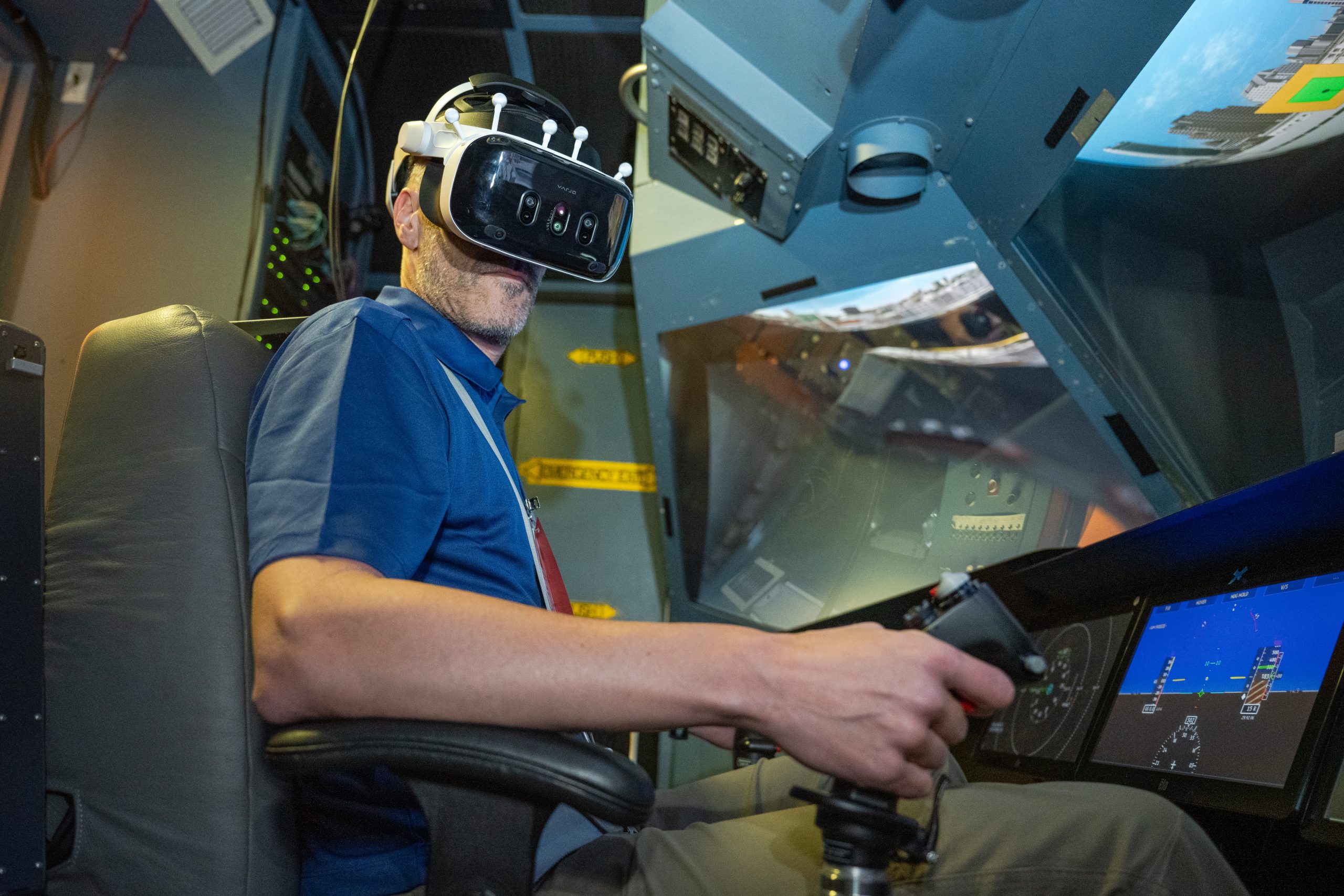Commercial companies and government agencies are increasingly pursuing a more immersive and affordable alternative to conventional displays currently used in flight simulators. A NASA research project is working on ways to make this technology available for use faster.
Mixed reality systems where users interact with physical simulators while wearing virtual reality headsets offer a promising path forward for pilot training. But currently, only limited standards exist for allowing their use, as regulators have little to no data on how these systems perform. To address this, NASA’s Ames Research Center in California’s Silicon Valley invited a dozen pilots to participate in a study to test how a mixed-reality flight simulation would perform in the world’s largest flight simulator.
“For the first time, we’re collecting real data on how this type of mixed reality simulation performs in the highest-fidelity vertical motion simulator,” said Peter Zaal, a principal systems architect at Ames. “The more we understand about how these systems affect pilot performance, the closer we are to providing a safer, cost-effective training tool to the aviation community that could benefit everyone from commercial airlines to future air taxi operators.”
Mixed reality blends physical and digital worlds, allowing users to see physical items while viewing a desired simulated environment. Flight simulators employing this technology through headset or a similar setup could offer pilots training for operating next-generation aircraft at a reduced cost and within a smaller footprint compared to more traditional flight simulators. This is because pilots could rely more heavily on the visuals provided through the headset instead of large embedded visual displays in a physical motion simulator.
During the testing – which ran May 23-30 – pilots donned a headset through which they could see the physical displays and control sticks inside the Vertical Motion Simulator (VMS) cab along with a virtual cockpit overlay of an electric vertical take-off and landing vehicle through the head-mounted display. When the pilots looked toward their windscreens, they saw a virtual view of San Francisco and the surrounding area.
Pilots performed three typical flight maneuvers under four sets of motion conditions. Afterward, they were asked to provide feedback on their level of motion sickness while using the head-mounted display and how well the simulator replicated the same movements the aircraft would make during a real flight.
An initial analysis of the study shows pilots reported lower ratings of motion sickness than NASA researchers expected. Many shared that the mixed-reality setup inside the VMS felt more realistic and fluid than previous simulator setups they had tested.
As part of the test, Ames hosted members of the Federal Aviation Administration Civil Aerospace Medical Institute, which studies factors that influence human performance in aerospace. Pilots from the National Test Pilot School attended a portion of the testing and, independent from the study, evaluated the head-mounted display’s “usable cue environment,” or representation of the visual cues pilots rely on to control an aircraft.
NASA will make the test results available to the public and the aviation community early next year. This first-of-its-kind testing – funded by an Ames Innovation Fair Grant and managed by the center’s Aviation Systems Division – paves the way for potential use of this technology in the VMS for future aviation and space missions.



